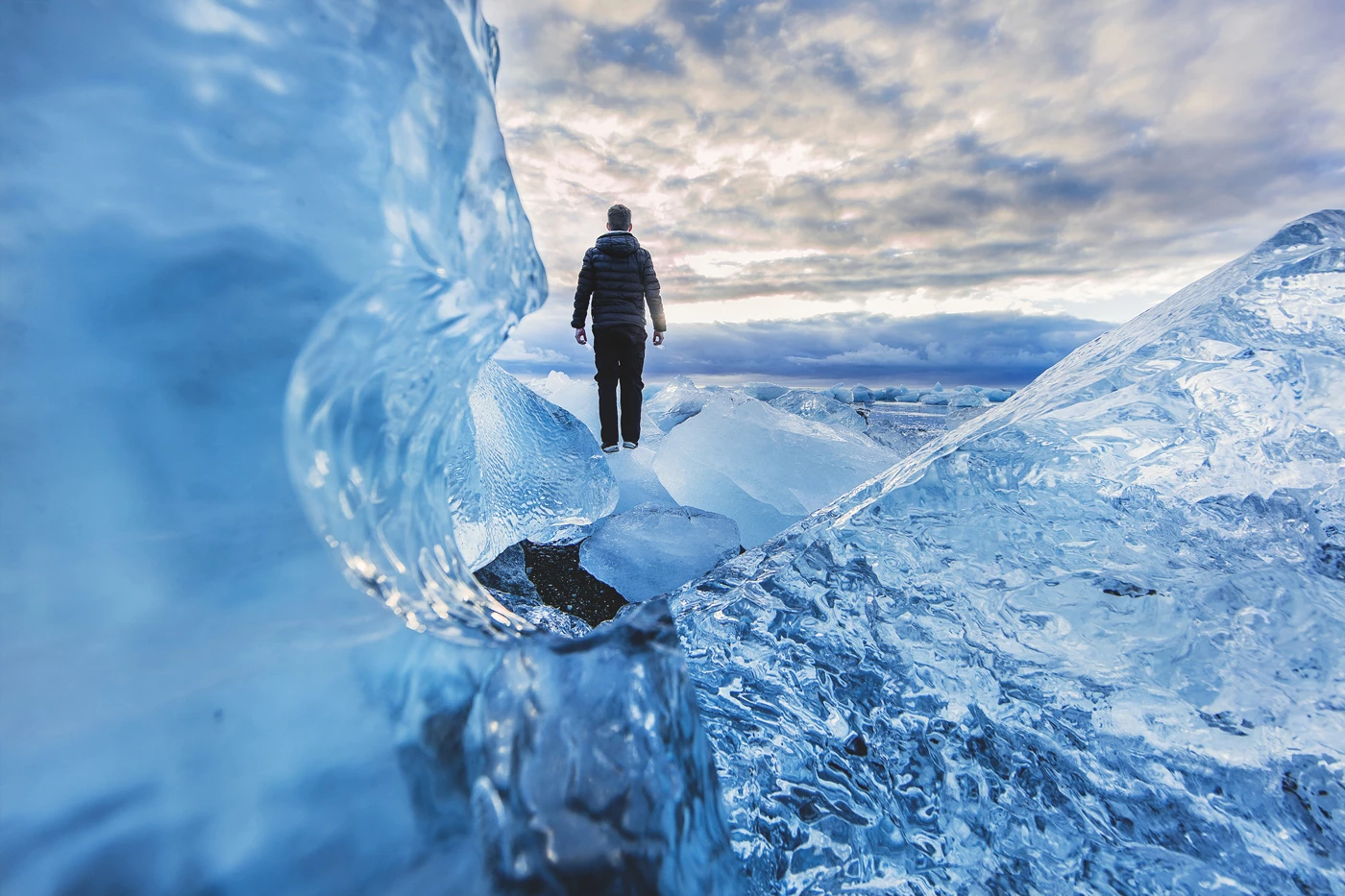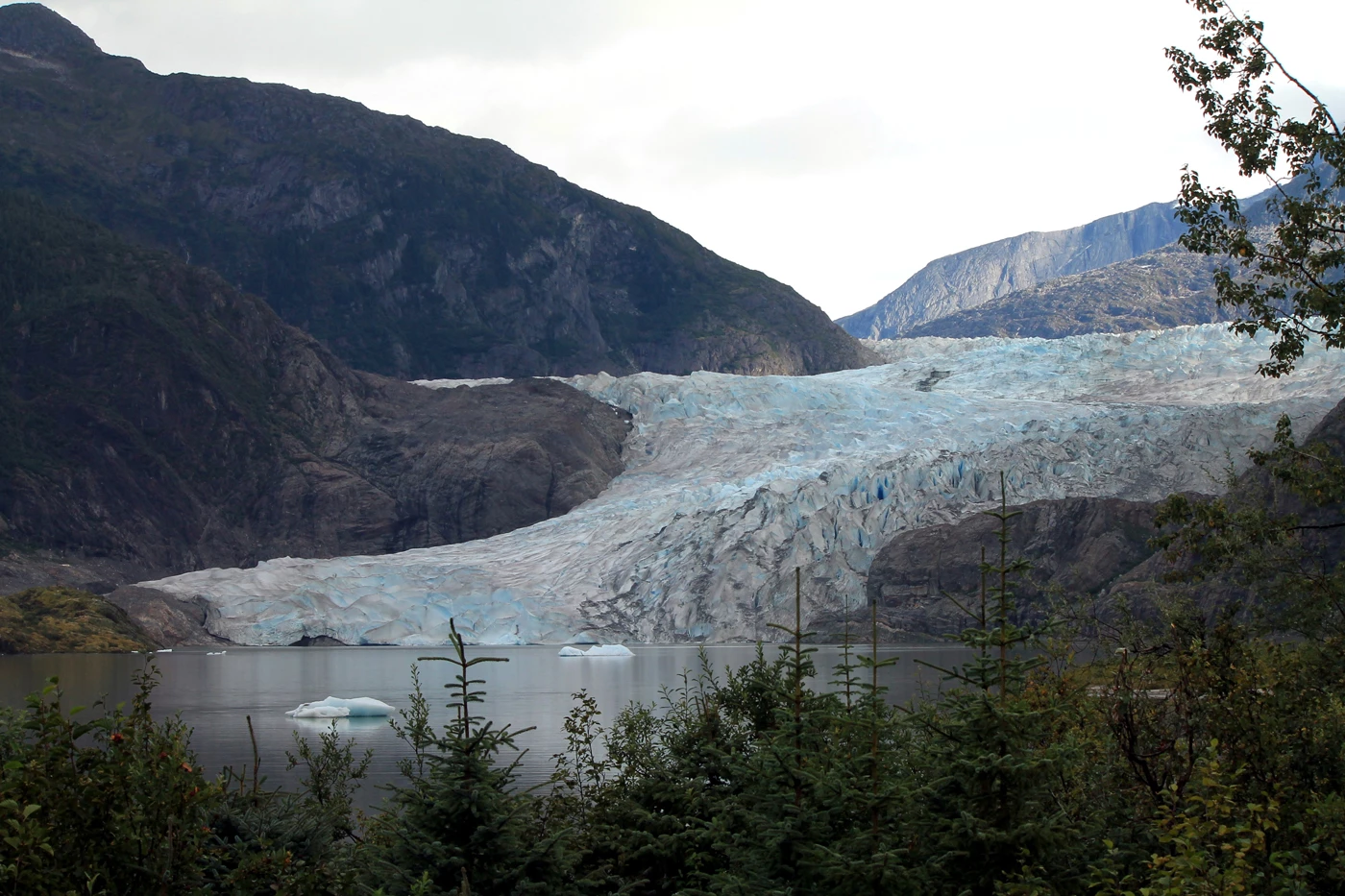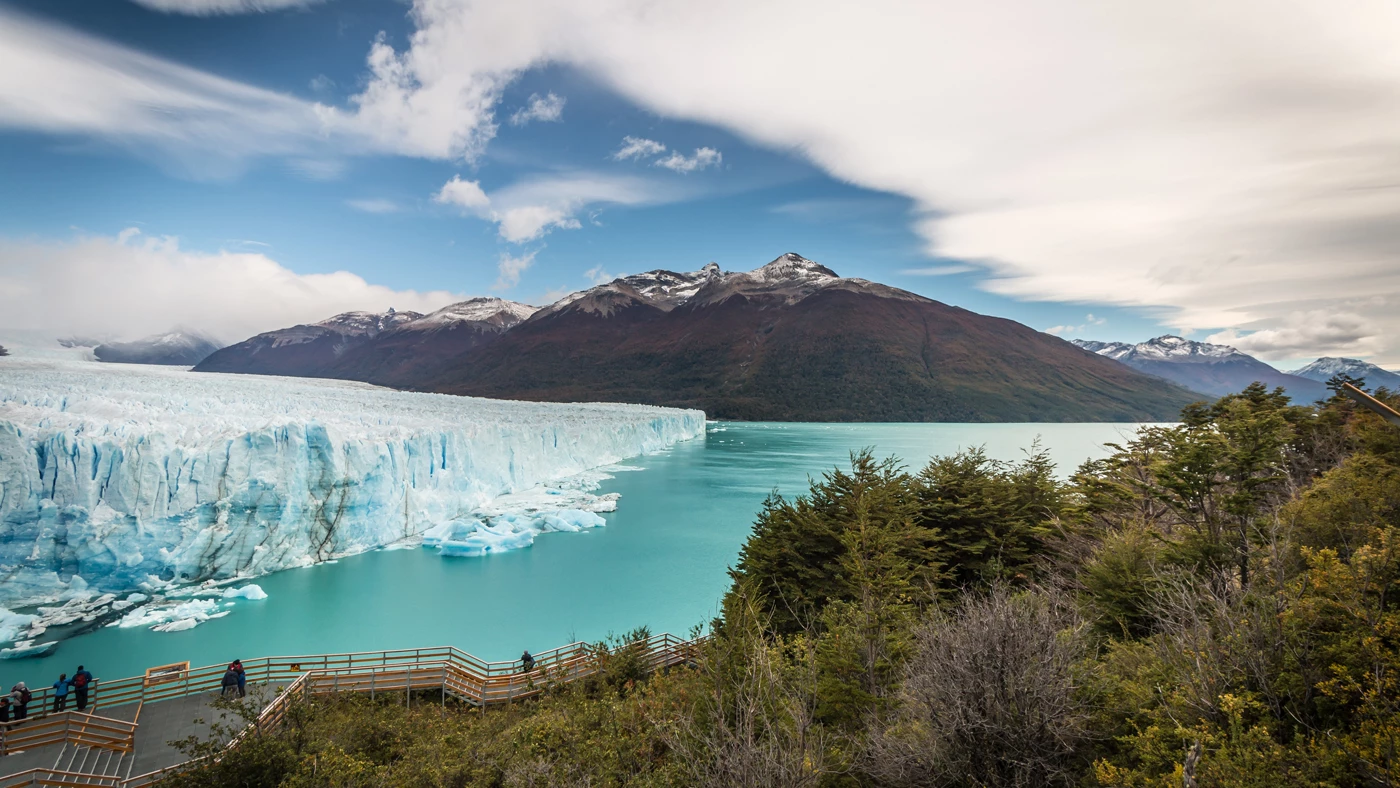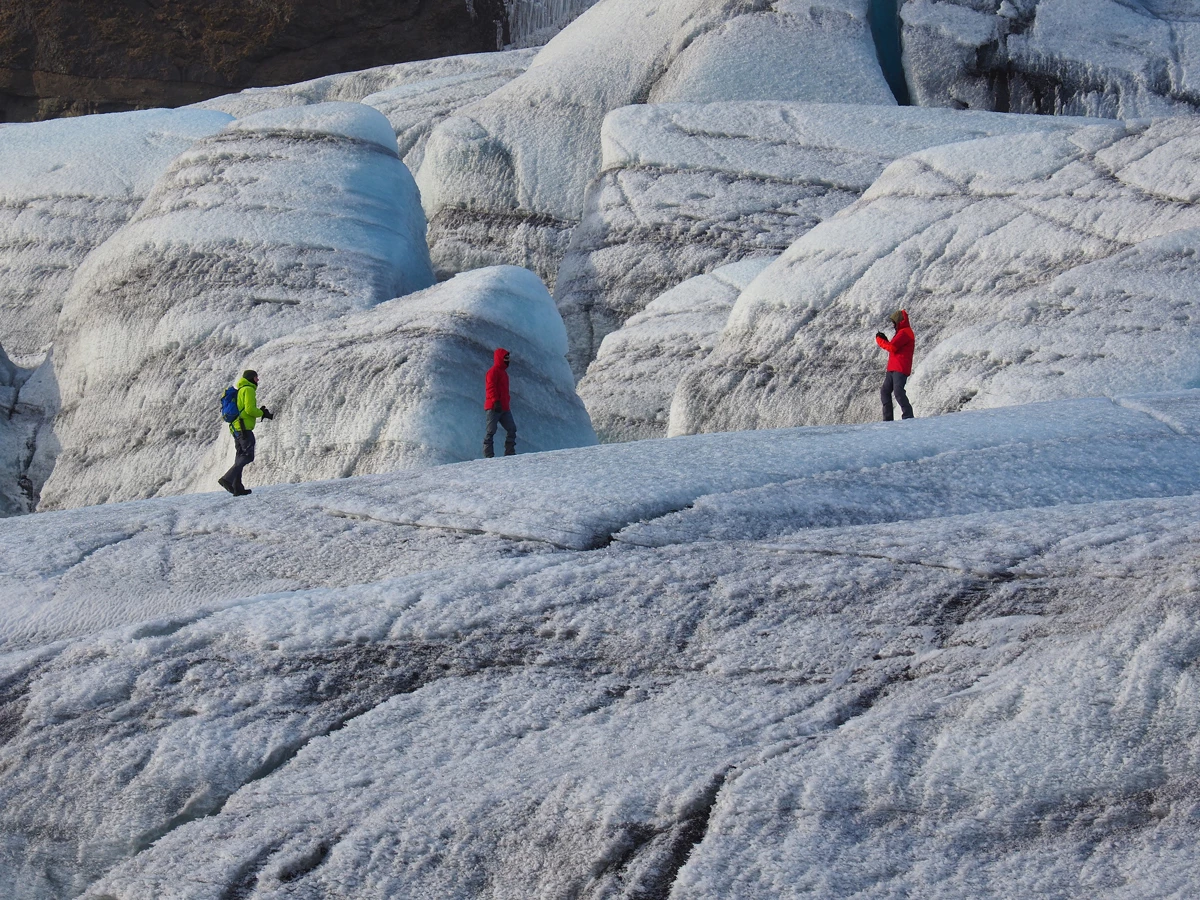27/09/2019 | Category: Travel Insurance

Walking on a glacier is a mind-blowing experience – there’s no other way to describe it!
The combination of long stretches of pristine, white landscape and clear, tranquil air is both enchanting and breathtaking. So it’s no surprise it’s a dream winter holiday activity for many of us.
Glaciers are among the most amazing natural wonders of Earth. Forming over many centuries, they attract lots of tourists throughout the year looking for an unforgettable experience.
Is it safe to walk on glaciers?
If you’ve never walked on a glacier before, you might be wondering how safe it is.
It’s true that glaciers can be dangerous in many ways, but if you follow simple guidelines and keep safety front of mind, you should have no problems at all.
There are three main things to remember to stay safe while walking on a glacier. The first is never to go walking on a glacier alone. The risk of slipping on the ice and sliding into a crevasse is high and it would be virtually impossible to get out without the help of a companion.
The second is to stay away from the edge of a glacier. These areas can be highly unstable, causing them to break and fall off into the water.
The third is to be prepared. Make sure you have done plenty of walking training prior to your trip and take the right clothes and equipment with you. Think thermals, ski jackets, trousers, good walking boots (which you can hire), gloves, sunglasses, food and drink. And don’t forget a camera!
Having comprehensive winter sports insurance cover can put any safety concerns to rest. Non-standard travel insurance can be tailored to fit your holiday and the activities you choose to do.
Best glacier walking destinations around the world
There are lots of awe-inspiring glaciers around the world, and it’s hard to pick the best. But we’ve done it. Here’s a list of our top three destinations for glacier walking.
1. Alaska, USA
 The wilds of Alaska can feel relatively untouched. The US territory is renowned for its rugged landscapes, iconic wildlife and the sense of adventure visitors get from being there.
The wilds of Alaska can feel relatively untouched. The US territory is renowned for its rugged landscapes, iconic wildlife and the sense of adventure visitors get from being there.
Alaska is home to arguably one of the most accessible glaciers in the world. The Mendenhall Glacier is hugely popular with tourists (attracting hundreds of thousands of visitors each year) thanks to its easy access by road.
Tourists can take a bus or taxi from the capital of Juneau to the glacier or book an organised glacier excursion, which can include whale watching as an added bonus.
Less accessible is Alaska’s Alsek Lake glacier. This is one for true wilderness junkies. The world’s largest non-polar icecap hangs over the Fairweather Range and flows into the Alsek Lake below.
Visitors need to raft upstream and pitch tents on the westside of Gateway Knob (there are often mini tsunamis on the east bank caused by calving glaciers so is best avoided).
The best time to visit Alaska’s glaciers is during the summer months (between May and September).
2. Argentina
 One of Argentina’s most famous tourist attractions, the Perito Moreno Glacier makes up part of the huge Southern Patagonian Icefield.
One of Argentina’s most famous tourist attractions, the Perito Moreno Glacier makes up part of the huge Southern Patagonian Icefield.
Named after the explorer Francisco Moreno, the glacier lies within the Los Glaciares National Park and is known for being easy to access and its stable conditions.
The UNESCO World Heritage-designated glacier is spread over an area of 250 sq km, and is more than 30km in length. It also holds the world’s third-largest reserve of freshwater.
The glacier is one of only three glaciers around the world that is growing rather than shrinking – experts are trying to work out why this is the case.
The Perito Moreno Glacier is located 48 miles from the town of El Calafate, where visitors can book onto a ‘Big Ice’ experience. Tours include boat journeys along the imposing front walls of the glacier, and hikes across the top.
The best time to visit Argentina’s Perito Moreno Glacier is during the summer months (November to March), however the glacier and park can be visited throughout the year. Tours during the winter months can mean much harsher conditions, with less predictable weather.
3. Iceland
 Iceland’s glaciers make up around 11% of its land area.
Iceland’s glaciers make up around 11% of its land area.
The country is home to Europe’s largest glacier – Vatnajökull (aka Vatna Glacier) – which covers a total area of 8,100 sq km and more than 8% of Iceland. Not only spectacular at ground level, Vatnajökull Glacier also has several active volcanoes beneath it, giving a glacier walking holiday an added hint of danger!
The surrounding Vatnajökull National Park also boasts a number of glacial rivers and Jökulsárgljúfur Canyon, home to Dettifoss, Europe’s most powerful waterfall.
This barren landscape has provided filming locations for a number of films and TV programmes including James Bond, Lara Croft, Batman and Game of Thrones.
Visitors will not want to miss Thórisjökull (both a glacier and volcano) and the ice caves (angular tunnels of azure ice you can explore).
The best time to visit Iceland’s glaciers is during the winter months (November to February). Remember that winter weather conditions can be tricky, so leave room for flexibility in your itinerary in case you need to shift things around.
Go glacier walking before they disappear
If glacier walking is on your bucket list, it’s an activity you should probably do sooner rather than later. These incredible frozen landscapes are diminishing in size – and in some cases disappearing at an alarming rate.
Last month, Iceland marked the loss of its first glacier to climate change with an official ceremony and bronze plaque. The formerly 16 sq km Okjokull Glacier was reduced to a few scattered remnants of ‘dead ice’.
Looking for a winter holiday with a difference?
Glacier walking is not your average winter holiday and there are plenty of things to think about when booking your trip. Glacier walking can be safe when you are with an official tour guide, follow their instructions and have the right gear with you. But there is always a risk, as with any winter sporting activity.
Make sure you have the protection you need to have the holiday of a lifetime with comprehensive winter sports insurance.
At Insurance Choice we can help you find winter sports insurance to cover you for whatever activities you choose. Cover can include cancellation, personal property, search and rescue, and emergency medical expenses.
Even if you have a pre-existing medical condition or illness, we can help you find the right cover for your trip. Get in touch with our team of specialists today and get a quote for winter sports insurance.
